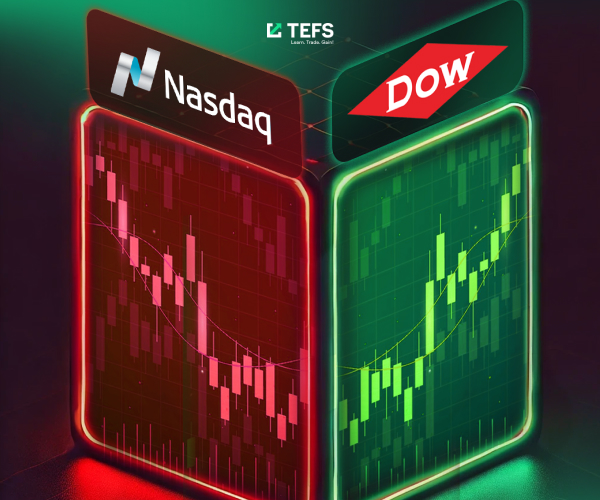Good news means bad news for the market 13/01/2025

HOT stories for today
Stocks on the move:
- Iovance Biotherapeutics (IOVA, -10%): The stock's drop reflects broader weakness in small-cap names, with the Russell 2000 sliding deeper into correction territory amid growing concerns over persistently high interest rates.
- Wolfspeed (WOLF, -13%): Shares tumbled to their lowest level in 27 years following a Bloomberg report about new export restrictions from the Biden administration. The proposed measures, aimed at limiting AI chip sales to China and Russia, are expected to be finalized before the end of Biden's term.
- Advanced Micro Devices (AMD, -5%): After HSBC issued a double downgrade earlier this week, Goldman Sachs followed suit by cutting its rating from ‘Buy’ to ‘Neutral.’ The firm also reduced its price target to $129 from $175, per a report from TheFly.
- PG&E Corp. (PCG, -11%): The California utility hit a six-month low as wildfires continued to spread across Los Angeles. With the cause still undetermined, investors are factoring in the risk that PG&E could bear some liability.
Today’s action
- Asia-Pacific markets opened the week in the red after Friday’s U.S. jobs report dashed hopes for early rate cuts by the Fed. In China, both exports and imports for December surpassed expectations, but investors remain focused on bond yields. The People’s Bank of China halted government bond purchases last week, sending the 10-year yield to record lows this month. European markets are set for a mixed start, while U.S. stock futures edged lower early Monday. Dow futures fell 0.19%, S&P 500 futures dipped 0.44%, and Nasdaq 100 futures slipped 0.58%.
- This week brings key data, including December’s consumer price index on Wednesday. Before that, Tuesday will feature the producer price index, along with speeches from Kansas City Fed President Jeffrey Schmid and New York Fed President John Williams. Investors will also be eyeing major bank earnings as the week unfolds. The report is especially significant as uncertainty looms over the Federal Reserve’s approach to rate adjustments this year. Current Fed funds futures suggest a strong probability that policymakers will hold interest rates steady at their upcoming meeting.
Wahtclist: AMD, PG, WOLF, NVDA, IOVA, CVNA, MSFT,
Bitcoin
- Bitcoin has dropped 10% so far this month, but analysts note that steep corrections in January are a familiar pattern in post-halving years. Historically, Bitcoin has seen declines between 25% and 30% during the first month of the year following a halving, based on previous market cycles. “January sell-offs are typical in post-halving years,” crypto analyst Axel Bitblaze shared with his 123,000 followers on X on Jan. 12. “We saw this after the 2017 and 2021 halving cycles, and we know how those years ended.” Currently, Bitcoin is trading near $94,000 after falling from a high of $102,300 on Jan. 7 to just below $92,000 before a modest recovery.
- In January 2021 — the last post-halving year — Bitcoin dropped over 25%, falling from more than $40,000 to just above $30,000 by month’s end. Despite the shaky start, the cryptocurrency soared 130% that year, reaching a record high of $69,000 by November. Similarly, in January 2017, Bitcoin plunged 30% from $1,130 to $784 following the 2016 halving. However, it went on to climb an astounding 2,400% that year, peaking at $20,000 in December. Analysts argue that while short-term corrections may unsettle traders, history suggests they often lay the groundwork for massive rallies later in the cycle.
Watchlist: Bitcoin: 91 000-108 000, Ethereum: 3100-3800, Solana: 175-220
Forex
- The Japanese Yen continues to draw safe-haven inflows, gaining ground against the US Dollar for the third straight session. The USD/JPY pair has retreated from Friday’s multi-month high as risk-off sentiment grows amid expectations that the Federal Reserve will pause its rate-cutting cycle later this month. Geopolitical tensions are also contributing to demand for the Yen. However, uncertainty surrounding a potential rate hike from the Bank of Japan (BoJ) could limit further bullish moves in the JPY.
- Meanwhile, the EUR/USD pair remains under pressure, trading near 1.0215 in early Monday’s European session, down 0.30% on the day. The US Dollar continues to strengthen, buoyed by robust December jobs data that reinforces the Fed’s stance to hold rates steady in January. In contrast, dovish expectations surrounding the European Central Bank (ECB) are weighing on the Euro, dragging the pair lower for the fifth consecutive session.
Watchlist: EUR/USD: 1.0200-1.0460, USD/JPY: 155-158.50
Basic Materials
- West Texas Intermediate (WTI) crude surged to $77.46 per barrel on Monday, a level not seen since October 8, extending gains for the third straight session during Asian trading hours. Oil prices have steadily climbed amid rising concerns over potential supply disruptions triggered by fresh U.S. sanctions targeting Russia's oil industry. The U.S. Treasury has imposed sanctions on major producers Gazprom Neft and Surgutneftegas, curbing Russia's capacity to export oil to key buyers such as China and India.
- Meanwhile, gold prices started the week on a weaker note, pulling back from Friday’s one-month high of $2,700. The precious metal faced selling pressure during the Asian session, snapping a four-day rally. Following a stronger-than-expected U.S. jobs report, hawkish expectations around the Federal Reserve have driven U.S. bond yields to their highest level in over a year and pushed the U.S. Dollar to a two-year peak. Both factors are weighing on gold, which offers no yield. However, ongoing risk-off sentiment in financial markets could support the safe-haven XAU/USD pair and limit further downside.
Watchlist: GOLD 2600-2750, US Oil: 70.00-78.00
The TEFS Analyst team wishes you a successful day!


 Русский
Русский  Español
Español  Deutsch
Deutsch  Indonesian
Indonesian  Português
Português  Français
Français  Nederlands
Nederlands  Italiano
Italiano  中文
中文  عربي
عربي  Türkçe
Türkçe 
